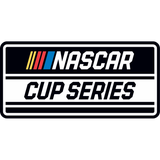
Throwback Thursday: History's most flagrantly illegal race car
Junior Johnson is a member of the inaugural NASCAR Hall of Fame class, a driver who won 50 races and an owner who saw his drivers win six NASCAR Sprint Cup championships.
And he might be best known for building a car that was blatantly illegal, so completely beyond the spirit of the rules, let alone the letter of the law, that he earned himself a permanent spot alongside Smokey Yunick as NASCAR's greatest scofflaws.
The year was 1966, the place the old Atlanta Raceway. NASCAR was in the midst of one of its darkest eras, thanks to a battle of wills between NASCAR czar Big Bill France and the Big Three automakers in Detroit, who were locked in a rapidly escalating horsepower war and were trying to bring ever-more-radical power plants to stock-car racing.
A year earlier, Chrysler had launched a NASCAR boycott that lasted about half a season, after France banned the automaker's omnipotent 426 hemi engine because it was far more powerful than any rival production engine from Ford or General Motors.
Without defending champion Richard Petty and the other top Plymouth and Dodge drivers of the day, the 1965 season had been a disaster for track owners and fans alike.
Yet history would repeat itself -- sort of -- in 1966, when Ford teams sat on the sidelines as the year began. The second boycott was again caused by an engine ban and again sidelined the defending champion. This time, though, it was Ford's overhead-cam 427-cubic-inch engine that was banned, and 1965 titleholder Ned Jarrett on the sidelines.
Eventually a compromise of sorts was reached between France and one of Ford's top factory teams. Star racer Fred Lorenzen, a driver with movie star good looks and charm to burn, was slated to return the blue oval brand to action Aug. 7 at Atlanta in a car owned and prepared by Johnson, who broke ranks with Ford, apparently due to concessions he received from France over how his car would be prepared.
The car in question, along with Smokey Yunick's black-and-gold Chevrolet Chevelle, which competed in the same race, was the most outrageous, bodacious, and flagrantly illegal car to ever compete in a NASCAR event. Dubbed the "Yellow Banana," Johnson's 1966 Ford Galaxie had its top chopped three to five inches -- depending on whose estimate one believes -- and its windshield was laid back at least 20 degrees. Its nose nearly touched the ground, and its rear quarter panels were swept upward to produce downforce, a modification that made the supposedly straight Galaxie sheet metal curve more like a banana.
"They literally had to lift Lorenzen up and slide him into the driver's seat," remembers journalist Bob Moore, who covered the race for the Charlotte Observer. "There was no way he could climb in it normally, because the roof was slanted. And the front windshield was also sloped at an angle. The left side of the car was down about three inches lower than the right side of the car. Because Ford was struggling to stay in the sport, NASCAR basically turned their back on this deal and said, 'This is fine.'"
Not that Yunick's black-and-gold No. 13 Chevelle was any more legal, given that it was built to roughly 7/8th-scale relative to its stock counterpart and carried an oversized engine, among a laundry list of infractions. Among the other "innovations" on Yunick's car that weekend were a built-in roof spoiler, offset frame and removed drip rails on the roof.
Amazingly, both cars sailed through tech inspection, much to the outrage of Cotton Owens, who owned the Dodge that points leader David Pearson was driving that weekend. "The Chrysler guys went berserk when they saw the cars Johnson and Yunick slid through tech inspection," Moore said. "Cotton decided that one of the advantages of Lorenzen's car was that it was sitting so much lower than everybody else's. So what Cotton did, he fixed up Pearson's car where the whole car would literally drop about three inches. And NASCAR figured it out on Sunday morning, so they went to Cotton and said, 'OK, you cannot let Pearson use this device.'
"The four springs would compress, and the car would drop. Well, NASCAR said he couldn't use those springs. You've got to use regular springs. Well, Cotton refused to do it, so he pulls the car out of the race. In that same race, Curtis Turner was driving for Smokey, who decided his engine was going to be about 20 cubic inches more than anybody else's. But the weird thing is, Turner is leading most of the race, and he blows up, so they never catch Smokey's car. Lorenzen crashes and Cotton pulled his car out. There was so much cheatin' going on that weekend, it was fun covering it, because every day it was a new deal."
The Yellow Banana would never race again, because the factory Ford teams soon returned, the fans were appeased, and France had no reason to look the other way for the good of the sport. The Atlanta race in 1966 would forever represent the high-water mark -- or low-water mark, depending on your point of view -- for cheating, innovating, creative engineering, whatever one cares to call it.







